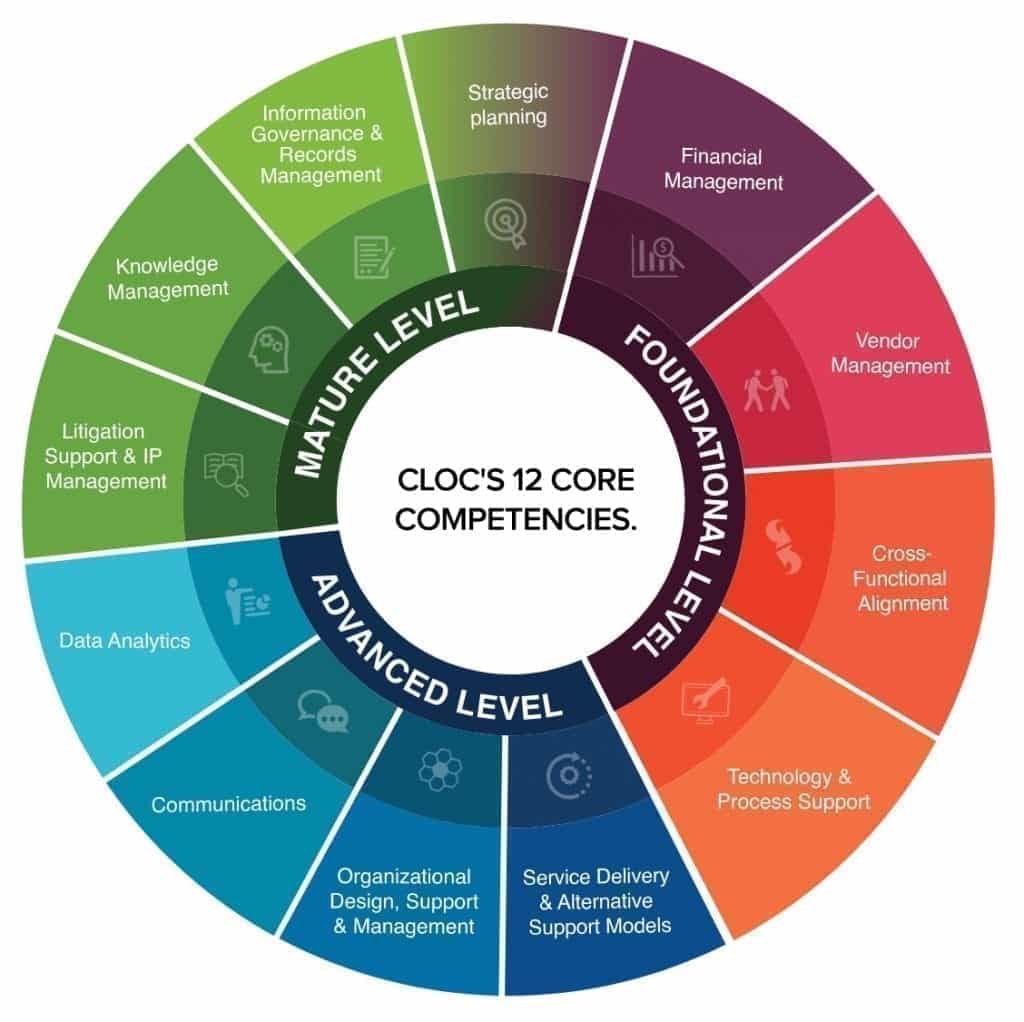5 Legal Technology Trends We Saw at CLOC 2018
As anyone who’s attended a CLOC Institute conference can tell you, they inspire connection and collaboration. The innovations and technologies on display? They can be just as inspiring.
Here, then, in no particular order, are five legal technology trends apparent at CLOC 2018, each with a good chance to power both digital transformation and the expanding role of Legal Operations in any forward-facing enterprise.
1 • Collaboration is driving evolution
Jason Parkman pointed it out in his recent blog post: The spirit of connection on display at a CLOC gathering is amazing. Connection leads to collaboration, and collaboration is powering legal technology trends, and shaping the future of Legal Operations.
What’s remarkable, to my mind, is how pervasive this openness and willingness to pull together is. It manifests in how Legal Ops professionals share and teach via CLOC, yes, but also in the way platform providers work closely with customers, how Legal Ops teams and their own stakeholders unite around technologies like workflow automation to invent new, better ways of conducting business.

Among legal technology trends, this one may be most striking because it’s such a merger of human commitment and tech ingenuity, and it shows no sign of slowing down – quite the reverse, actually, as these tools enable even more frictionless cooperation and teamwork throughout an enterprise. Planning and goal-setting to leverage collaboration to achieve objectives, and creating shared understandings of priorities, will help organizations make the most of this newfound capability.
Another very visible way this plays out is in how complementary technologies are bringing aligned companies closer together, forging connections producing an entirely new level of value and opportunity for Legal Ops users. That’s evident in our own story, and that why’s it was so fitting to announce the merger of Mitratech and ThinkSmart, and the potential such a connection creates, at this year’s CLOC.
2 • Data and analytics are ever-more important
In any organization where workflow automation or other process technologies are adopted, analytics are a cornerstone consideration. It’s no surprise Legal Operations departments, invested in bringing efficiency to legal processes, are embracing them. Analytics serve as a way of demonstrating the value of technology, and of Legal Ops’ own contributions to the enterprise, so it was a much-discussed topic at CLOC 2018.
Data-driven decision-making and a reliance on metrics may be standard operating procedure in many areas of a company, but we’re still in the “revelatory” stage when it comes to their potential for many corporate legal departments. Those that have mastered legal process analytics are finding new economies and enhancements for in-house operations and how they utilize and manage outside counsel.
One aspect of this which was presented at CLOC was the idea of data sharing between companies and firms to help mutually optimize how they’re working together. As Winston Yeung, T-Mobile’s senior director of Legal Ops, explained, this no only helps align expectations and goals, but drives frank discussions around metrics and data that build trust and better relationships between his department and outside law firms.
3 • Cybersecurity is an increasing concern
If there was ever a business operation where data security should be a key concern, Legal Ops is it. In-house departments and outside counsel are privy to an enterprise’s most sensitive information, and evaluating how well that data is protected can be a tall order. Companies may rely on security questionnaires to assess how well outside firms are safeguarding that data, for example, which can be an inefficient approach. Some simply choose to trust their external vendors to do an adequate job of it, without review.
Justin Hectus pointed out, during an opening-day session at CLOC 2018, how his own firm, Keesal, Young & Logan, had seen a doubling in client cybersecurity assessments in both 2016 and 2017. Yet 85% of clients still don’t conduct cybersecurity assessments, a problem compounded by a lack of qualified cybersecurity talent, and there’s little standardization in assessment frameworks. Filling out paperwork rather than executing actual security measures, he said, “just doesn’t make sense.” As he points out, “streamlining the process is really in everybody’s best interest.”
Integration of cybersecurity best practices and protocols into legal technology platforms, such as workflow automation, will help in this. Meanwhile, CLOC leadership has launched a new initiative aimed at improving the cybersecurity of law firms, while urging Legal Ops to screen and assess their legal services vendors more stringently. Eventually, they hope to generate a new industry standard for Legal Ops cybersecurity that can be embraced by all.
4 • Using technology as a tool for Legal Ops maturity
Planning the evolution of an organization’s Legal Operations capabilities shouldn’t be decoupled from technology adoption, especially since the right tech platforms can accelerate that evolution and help Legal Ops reach a higher state of maturity and value. CLOC sessions included a panel featuring Kevin Clem of HBR Consulting and Jeff Franke of Yahoo and CLOC, where they explained the “maturity model” concept, and posed the question every enterprise should ask: What does a strong Legal Ops function really look like?

That question is part of a trend toward self-examination of what constitutes “maturity,” and what technologies contribute to that growth. It’s vital for Legal Ops departments to be honest with themselves; this December survey asked legal departments to rank themselves from 1 to 5 on how mature they considered their legal operations departments. More than 42% claimed they were a “4” or “5,” but that begs skepticism.
Advocates for Legal Ops technologies understand there’s enormous headroom for improvement, and many of them are in-house legal leaders like Jeff and Connie Brenton who have witnessed the results for themselves. The tilt toward technology as a means of reaching higher levels of operational maturity will keep growing, so long as tech providers
5 • Tech resources are expanding explosively
More and more resource providers were on deck at CLOC 2018, growing in number and variety as Legal Operations itself grows in acceptance and scope. The range of options available for Legal Ops teams, including technology options, is expanding so rapidly that it becomes more crucial to properly vet competing solutions and the vendors supplying them.
It’s why so many presenters and attendees agreed on the importance of conducting comprehensive technology assessments to determine which tech tools will best serve the needs of a particular Legal Ops department. Then, putting competing vendors to the test will sort out the provider who’ll prove to be the best partner over time. This due diligence will result in making technology choices that score early successes, too, that will help evangelize adoption and foster receptivity to further innovations.
One key consideration to keep in mind in this legal tech landscape? New solutions must be able to integrate with existing systems because “rip-and-replace” is a phrase bound to bring a scowl to any CFO’s face. New technologies that can properly integrate actually extend the lifecycle and value of legacy platforms. As options proliferate, it’s important for CIOs and CTOs to avoid rushing into embracing legal technology trends, but to judge them as part of a long-term transformation path.



